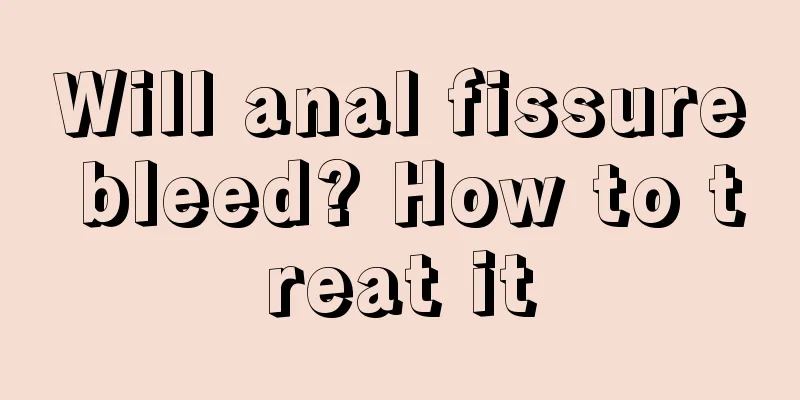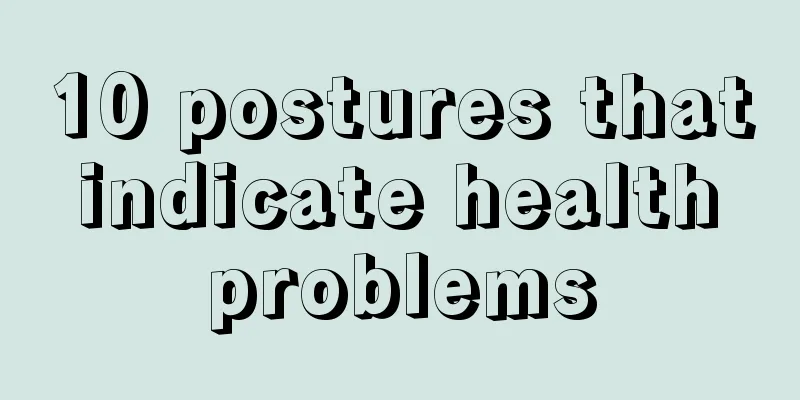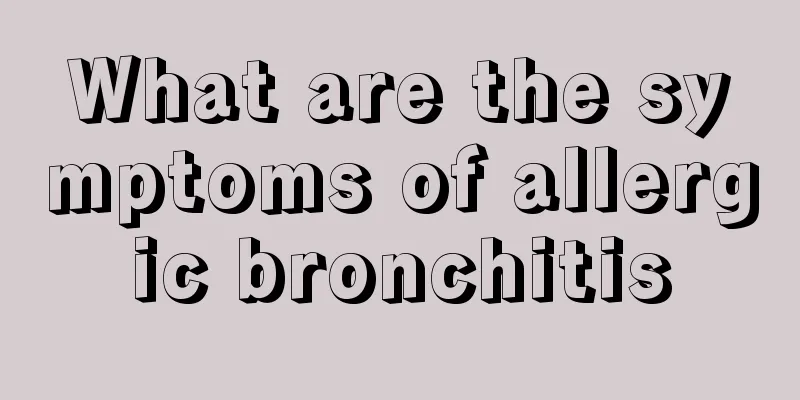Will anal fissure bleed? How to treat it

|
Friends who suffer from anal fissures must take correct diet therapy and care in time. Otherwise, if treatment is delayed and the disease becomes serious, there will be heavy bleeding, and bacteria can easily enter the body through the wound, leading to other diseases. 1. Keep bowel movements smooth Take laxatives orally to make stools soft and lubricated, increase the intake of high-fiber foods and change bowel habits, and gradually correct the occurrence of constipation. 2. Local sitz bath Take a sitz bath with 1:5000 warm potassium permanganate solution before and after defecation to keep the area clean. 3. Anal canal dilation Suitable for patients with acute or chronic anal fissures without complications of papillary hypertrophy and sentinel piles. The advantages are that it is easy to operate, does not require special equipment, has a rapid effect, and only requires a daily sitz bath after the operation. Method: After local anesthesia, the patient takes a lateral position and first uses the two index fingers to forcefully dilate the anal canal, then gradually inserts the two middle fingers and maintains dilation for 5 minutes. Men should expand forward and backward to avoid contact between fingers and ischial tuberosity, which would affect expansion. Women have a wider pelvis and do not have this problem. After the anal canal is dilated, the spasm of the anal sphincter can be eliminated, so the pain can be relieved immediately after the operation. After dilation, the anal fissure wound expands and opens, drainage is unobstructed, and the superficial wound can heal quickly. However, the disadvantage of this method is that it may cause complications such as bleeding, perianal abscess, hemorrhoidal prolapse and short-term fecal incontinence, and the recurrence rate is relatively high. 4. Topical application of nitroglycerin ointment Lund et al. (1997) reported the use of 0.2% nitroglycerin ointment applied to anal fissures twice a day for 4 to 6 weeks. The results showed that 20 minutes after medication, the maximum resting pressure of the anal canal dropped from 122.1±44cmH2O to 72.5cmH2O, which is equivalent to a one-time "chemical sphincterotomy". 39 cases of chronic anal fissures were treated, 33 were cured, 14 of which were cured within 4 weeks; the pain during defecation disappeared within 2 weeks; 5 cases relapsed, 4 of which were cured after re-administration of the medicine; no case of anal incontinence occurred, but 8 cases had mild pain during treatment. This method is a better non-surgical method for treating chronic anal fissure, but it still requires randomized controlled and long-term follow-up studies of large numbers of cases. |
>>: What should I do if I often have eye mucus
Recommend
Lanolin efficacy and function
Lanolin has good skin care, calming and moisturiz...
Other common symptoms of bladder cancer include urinary tract irritation symptoms
The more common manifestations of bladder cancer ...
Is Gardenia Indoor or Outdoor
I believe many people have heard He Jiong’s song ...
What is the function and usage of magnesium sulfate
Magnesium sulfate can be used not only in leather...
What to use to wash urethritis, the cleaning method is very important
Some friends who suffer from urethritis think tha...
Does sheep embryo extract have anti-aging effect?
Sheep embryo essence is a high-quality nutritiona...
.What kind of needle is used for handmade mist eyebrows
When getting eyebrow tattoos, you should first ch...
How many gallbladders does a person have
To maintain the health of the gallbladder, you mu...
Should I do a colonoscopy for gastric bleeding?
Among all stomach diseases, gastric bleeding is t...
What are some ways to tighten your tummy skin?
After giving birth, women's stomachs usually ...
Muscle-invasive bladder cancer has a high survival rate after radical surgery
The standard treatment for bladder cancer, especi...
How long can the saline solution be kept after it is opened
Physiological saline can be stored for a period o...
How to excrete gallstones? Extracorporeal lithotripsy is very common
Women are more prone to gallstones. People nowada...
There is a crack in my front teeth
Some people's teeth are very sensitive and th...
What's the matter with all the pimples on my back
Some people have acne on their skin due to many r...









